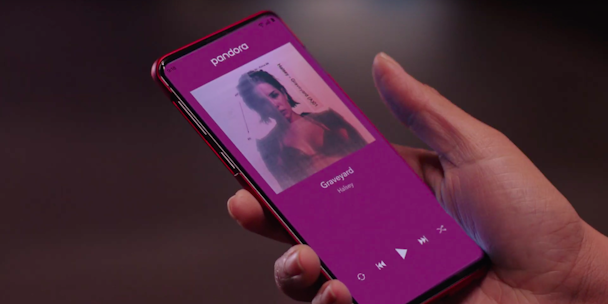Pandora develops voice ads that talk back: ‘We need to give consumers time to adopt’
Streaming platform Pandora has developed an ad format that consumers can talk back to. However, the company’s vice president of ad innovation strategy is cognizant that users need to be eased into such an interface before voice interaction gains real ubiquity.

Pandora has worked with the likes of Doritos and Wendy's on the format
The new ad format stems from Voice Mode, Pandora’s hands-free control tech that launched primarily for drivers. Marketers will now be able to buy ads that encourage users to answer back and create a basic dialogue with a piece of audio creative.
One of the first brands to test the technology is Doritos. The company created a Pandora ad that pauses and tells the listener: “Say yes if you want us to keep it real.”
An on-screen signal and tone prompt the user to "talk now". Once they reply, the ad continues.
Pandora also partnered with Ashley Home Stores, Turner Broadcasting, Unilever, Wendy’s, Comcast and Nestlé to develop the offer. It was developed in-house for a seamless rollout to both first- and third-party vendors, which currently includes Adswizz and Instreamatic.
Work to create a conversational audio ad began in mid-2018. Claire Fanning, Pandora’s vice president of ad innovation strategy, said the introduction came in response to advertiser interest in joining the dots between voice and marketing effectiveness.
“Marketers – rightfully – always seek to interact with consumers through the most frictionless and native experience, but there are also gaps in measurement in the audio space,” she said.
“While we know it’s effective and have means to prove that, a quick signal has not been as readily available. Voice enables people to speak back – which also provides a signal to measure.”
Advertisers may want consumers to talk to their ads, but do consumers want to talk back?
The technology may be growing in popularity as more tech companies enter the market: eMarketer estimates 34% of the US population have interacted with a voice assistant in 2019, a rise of 9.5% since 2018. Fanning believes consumers would “enjoy” interacting with it in the same way they enjoy asking Alexa for a weather report.
However, creating a dialogue between an ad and a consumer will require a behavioral shift on the latter’s behalf. Listening to radio and streaming ads has so far been a passive activity – now, it will become an active one.
This has led Pandora into an ongoing period of testing with brands to figure out the kind of creative most likely to elicit engagement. It has also led the company, which is looking to become a market leader in voice advertising, to take a slow and steady approach to rolling out the offer.
Fanning said her team has tested “many formats” and found that more complicated voice prompts, such as “send directions to maps to check out a happy hour deal”, currently overwhelm consumers.
“The opportunities are endless, but we are working consumer-first and having empathy for where they are with this sort of technology,” said Fanning. “It’s totally new – an ad has never asked them to talk back, and they are used to more proactively engaging with voice assistants.
“They are just learning they need to talk to ads, and we need to give them time, but we think voice will introduce utility to audio that hasn’t been seen before, and we’re really excited to test into the future.”
Content created with:

Pandora
Find out more
